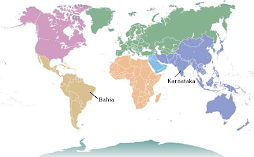3rd video-conference - Cafarnaum - Part 2
Patricia (Project coordinator – wearing a green t-shirt): This farmer has been working with them (Power) for 10 years. He has 5 acres of land and has a lot of experience in the semi-arid.
Mr. Siddu (staff of Power – Indian NGO): He asked about the season, when you start sowing. And what kind of crops do you grow.
Elisangela (farmer – wearing a blue blouse): Corn, beans, castor, sorghum…
Alan (translator – wearing a green t-shirt): This is custered apple’s seeds.
Antonio (farmer – wearing a white polo shirt): We are explaining how we store the seeds in our community. This seed can be the target for many insects. One way is to use chemical products, but this is not good for human health. So, re-using these bottles that would be rejected and pollute our environment, we re-use it to store the seeds. Mr. Osmar (farmer – wearing a green shirt and hat) is showing other soda bottles with seeds. You have to fill the bottle with seeds and tap it tightly. The science is here. You have to tap very tightly.
Airo (farmer – wearing a yellow/green shirt): The technique to take out the air is the key. Once you took out all the air, no insects will attack.
Ariel (technician at IPB, Brazilian NGO – green t-shirt): Besides the plastic bottles, farmers also use 200 liters recipients made of plastic or zinc. When there is not enough seed to fill the recipient, they use the candle technique. They put all the seeds that have to be stored inside the recipient, then light a candle inside it as well and finally close it. When the fire of the candle consumes all the oxygen inside the recipient, the problem of insects attacks is solved, since there is no oxygen for their survival. The candle stays inside the recipient. If you try to take it out, oxygen will go in again, which is not desired. So, the candle stays there.
Jurandir (farmer – white t-shirt) shows the process used in order to fill the bottles with the least air possible inside. You have to fill the bottle a little with seeds and beat it in any surface, then put some more and beat again, and again, until it is completely filled out. Then you tap it tightly.
Patricia: He said that the government sometimes provide certified seeds. The government pays 75% of the cost and the farmers have to pay 25%. This is only for small farmers. For those who have up to 5 acres of land.







